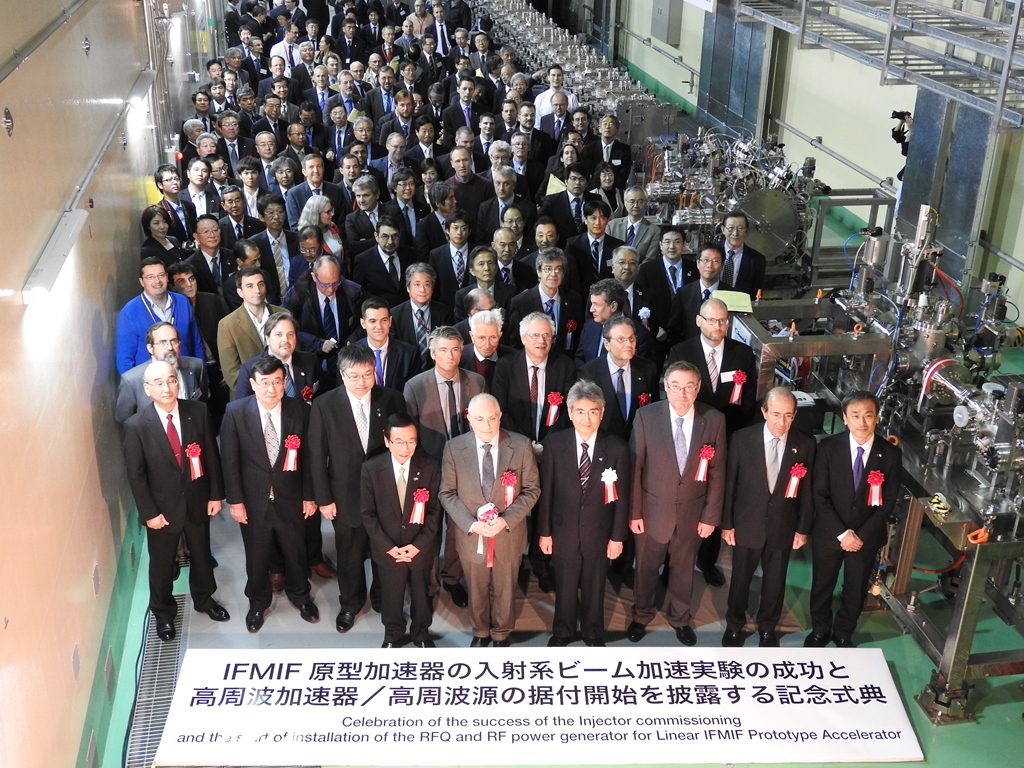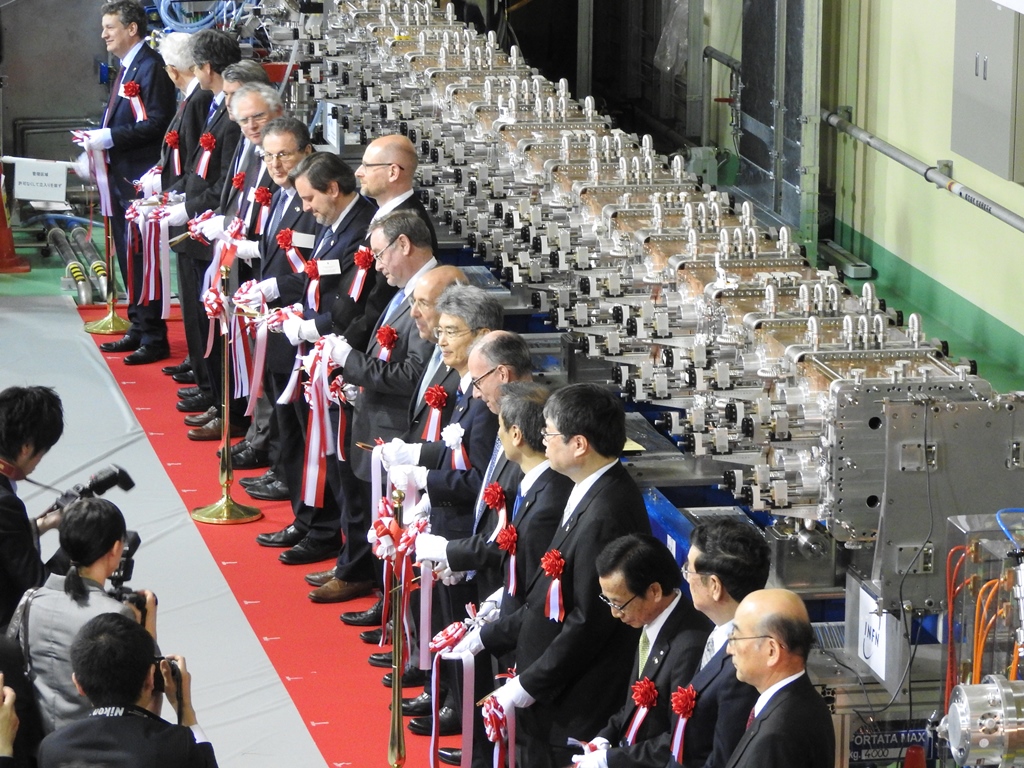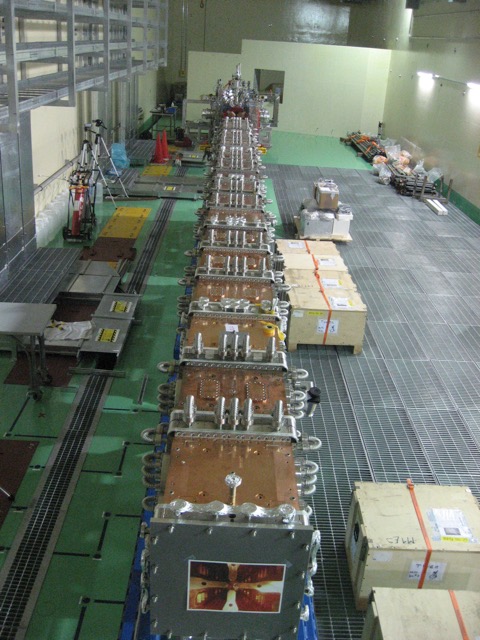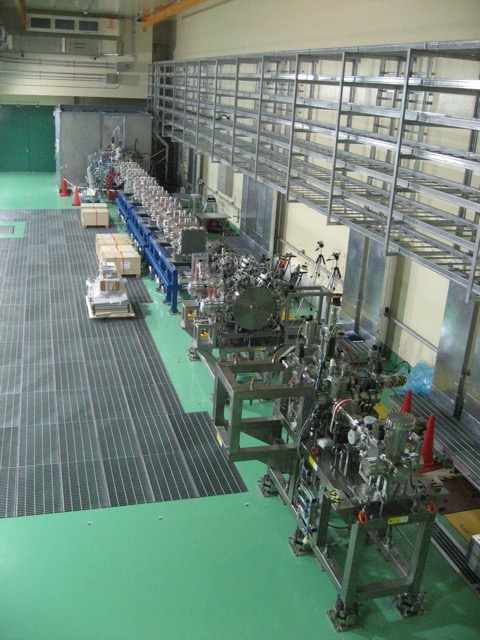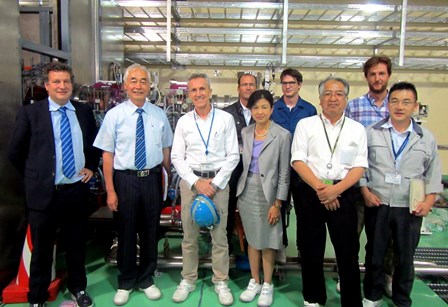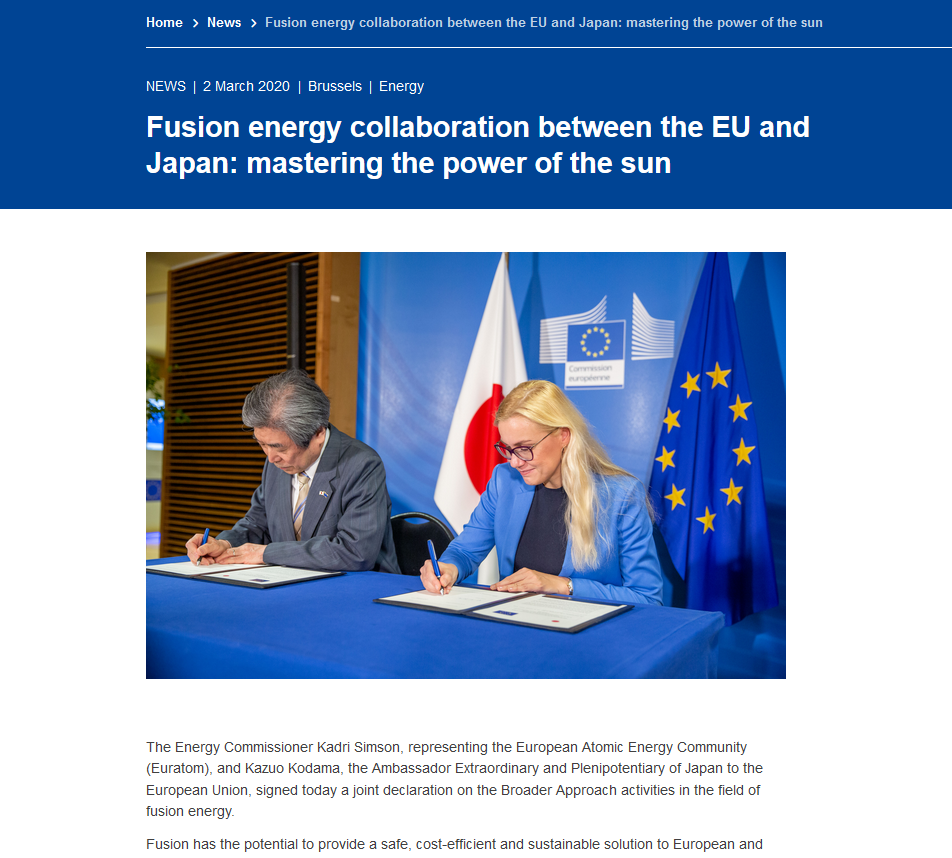
Category: VIP
Visit of the French Ambassador at Rokkasho on 12/11/2018
On November 12th, 2018, we were honored by the visit of the French Ambassador, his excellency Laurent Pic, and his delegation at Rokkasho. We were given the chance to present the activities performed at the IFERC site…
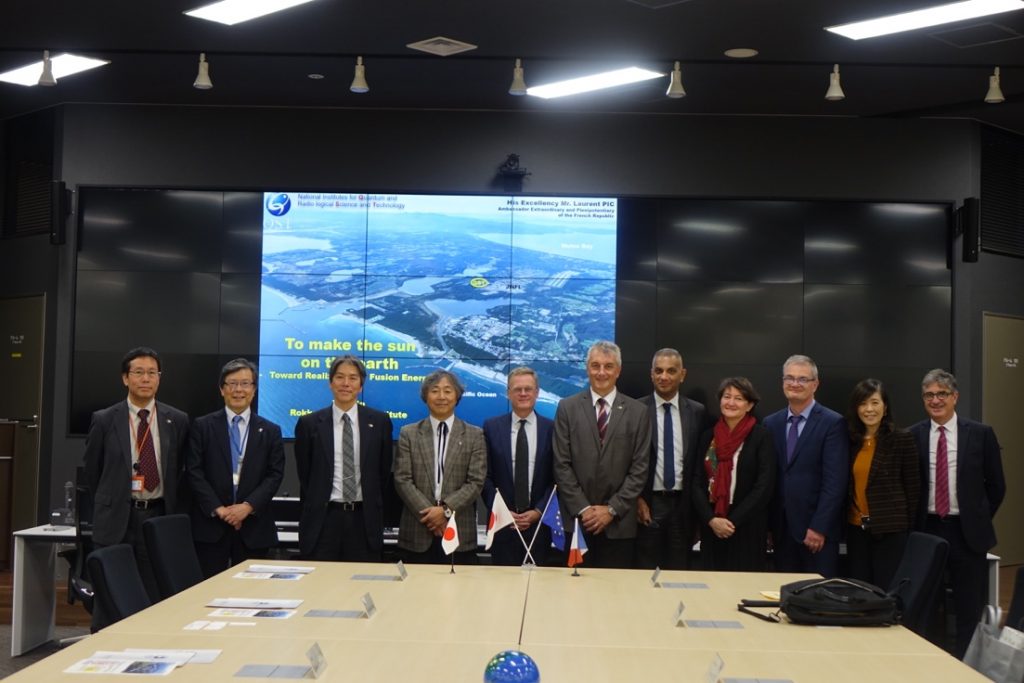
… followed by a tour focusing on the LIPAc activities. It was explained that these activities are conducted in the frame of the Broader Approach Agreement and the IFMIF/EVEDA Project. Emphasis was given to the substantial contribution from the French institute CEA being a key part of the European contribution.
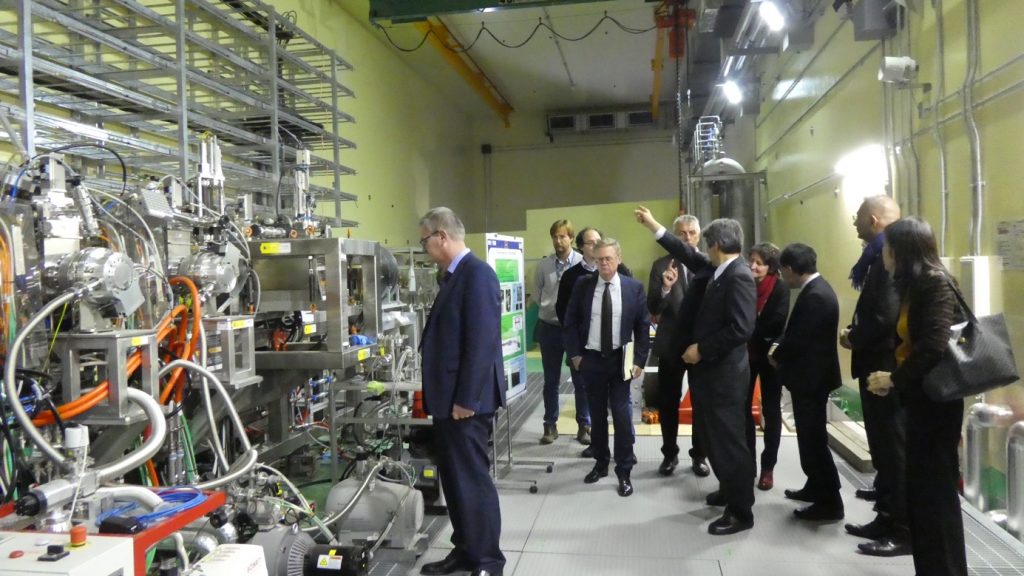
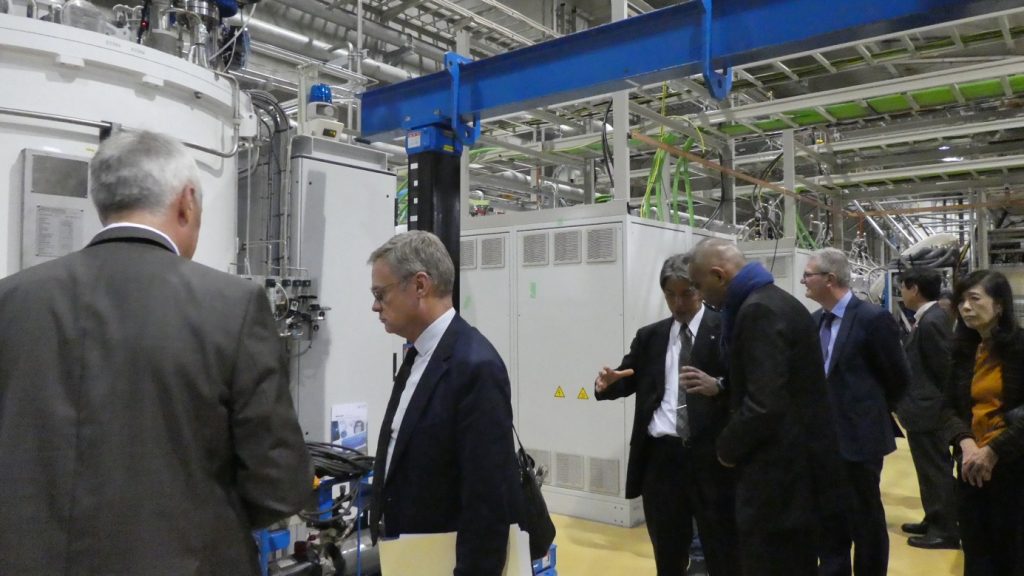
The “Francophone” working at Rokkasho were given the opportunity to share their experience about living in the north of Japan and working in this international partnership.
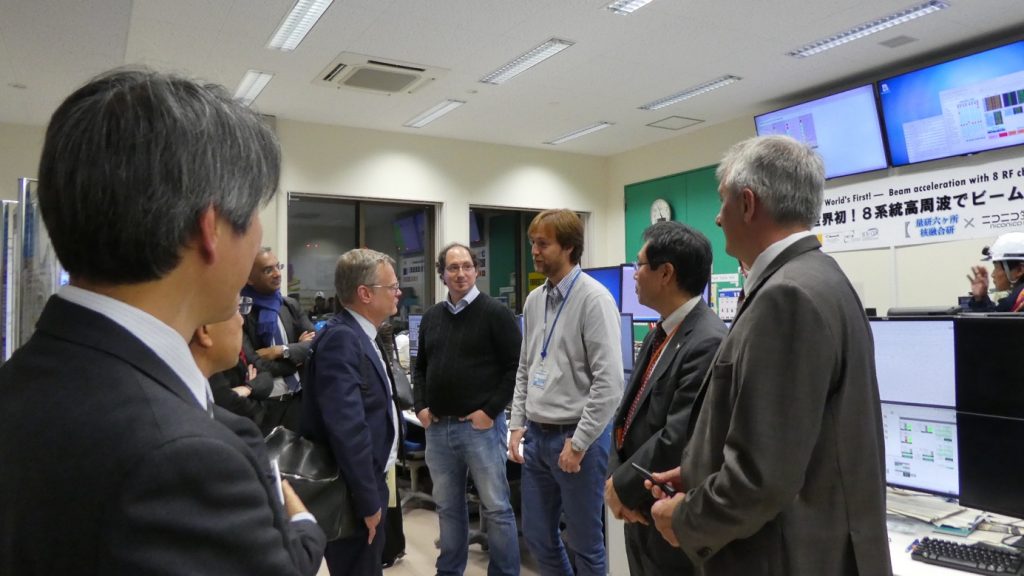
The ambassador was favourably impressed by the activities ongoing at Rokkasho under the European – Japanese collaboration and confirmed the strong interest of France in this project.
Before leaving, he promised that he will come back soon to learn more about the progress in the commissioning of the accelerator systems.
Celebrating major milestones of the Linear IFMIF Prototype Accelerator (LIPAc) in Rokkasho
On Thursday 21 April, a celebration took place as major accelerator components had been transported by F4E to the Rokkasho Fusion Centre allowing the start of second phase in the commissioning of LIPAc. This is another major milestone on road of success for the IFMIF/EVEDA Project. Already in 2013, the engineering design activities were successfully accomplished on schedule. By 2015, the Target and Test facility validation activities were fully completed, with the exception of the on-going corrosion/erosion tests in the lithium loop constructed in Brasimone by ENEA. This facility is now providing important results to quantify the corrosion/erosion rates of fusion reactor steel grades in contact with a high speed flow of liquid lithium.
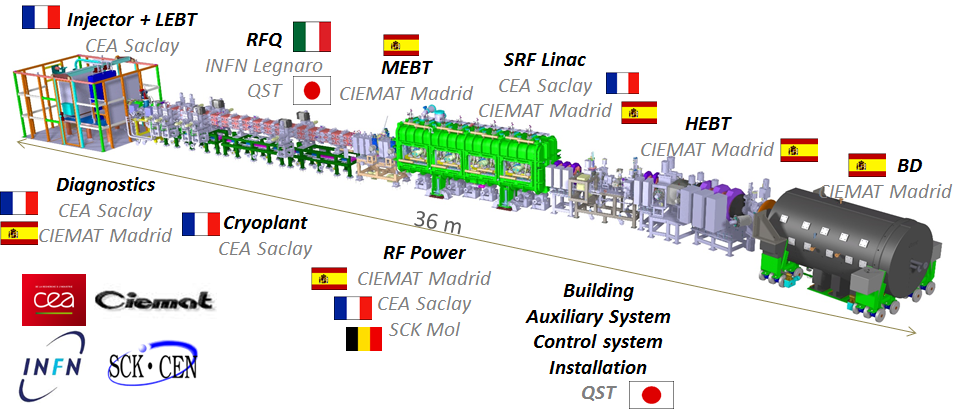
The LIPAc is under installation and commissioning in Rokkasho. Its key systems are designed and manufactured mainly by CEA, CIEMAT and INFN integrating also some important components contributed by SCK-CEN (see Figure above for a breakdown of the contributions). The LIPAc is designated to operate in unprecedented beam conditions at the cutting edge of present days’ accelerators technologies. During the previous meeting of Broader Approach Steering Committee (BASC-17), hosted on 11 December 2015 by RFX, an extension of the LIPAc validation period until December 2019 was approved. The deuteron source (Injector) developed by CEA has demonstrated that the beam characteristics are achievable in a parameter field never reached before (100 kA and 140 mA deuteron beam). An operational point with protons to be used as beam input to the ensuing accelerator stage, the Radio Frequency Quadrupole (RFQ) developed by INFN, has been determined. Additional commissioning of the Injector towards the mandated operation mode in Continuous Wave, i.e. 100% duty cycle of the beam, will take place during 2016 interleaved with the preparation activities for beam commissioning with the RFQ. The RFQ now under installation at Rokkasho is the longest one ever constructed. Today 6 out of 8 RF power chains developed by CIEMAT are already installed, which are to deliver 200 kW each to operate the RFQ. The last two chains are to arrive before the summer.
The celebration of the success of the Injector commissioning and the start of installation of the RFQ and the RF power generator for the Linear IFMIF Prototype Accelerator enjoyed utmost interest among European and Japanese partners. The celebration received the participation of representation from the European Delegation in Japan and the Embassies of all the six European countries that have been involved in the IFMIF/EVEDA project. Among the European guests were the Ambassador of Spain to Japan, Gonzalo de Benito; the Director of Nuclear Energy, Safety and ITER of the DG Energy in the European Commission, Massimo Garribba; the Chairman of the Governing Board of F4E, Joaquin Sanchez; the Chairman of CEA, Daniel Verwaerde, the member of the Executive Board of INFN, Eugenio Nappi; the Directors of INFN Legnaro, Giovanni Fiorentini, and of INFN Torino, Amedeo Staiano; Angel Ibarra from CIEMAT. Among the Japanese guests were the Governor of Aomori Prefecture, Shingo Mimura; the President of QST, Toshio Hirano; the President of JAEA (to which the Japanese Fusion programme belong to until 31 March 2016), Toshio Kodama; the Deputy Director General of Research and Development Bureau at MEXT; Shuichiro Itakura.
ITER Director-General gets update on Broader Approach
Rokkasho, Japan, 07 August 2014 ; (courtesy of ITER newsline)
In Rokkasho, on the eastern coastline of Japan, Europe and Japan are jointly carrying out advanced R&D activities in support of ITER and for successful development of the phases after ITER. Termed the “Broader Approach,” these efforts have been underway since 2007.
In early August, the Director-General of the ITER Organization, Osamu Motojima, and ITER Council Secretary, Sachiko Ishizaka, visited Rokkasho for an update on Broader Approach activities and to share information about progress at ITER.
The activities of the Broader Approach are essential for the phases after ITER in the world fusion program. One project, IFMIF/EVEDA, is validating the concept for a fusion-relevant neutron source based on Li(d,xn) reactions and will permit the rapid construction of such a facility within cost and schedule less than a decade from the time that a decision is taken. IFERC, another BA project, not only holds a supercomputer dedicated to plasma simulations for the world fusion community (Helios), but is also implementing research efforts towards a (post-ITER) DEMO reactor. JT-60SA, being a BA project as well, is a fusion experiment designed to support the operation of ITER and to investigate how best to optimise the operation of fusion power plants that are built after ITER
After visiting the facilities, including the injector of LIPAc, the Linear IFMIF Prototype Accelerator (LIPAc) that is presently under installation and commissioning, the visitors from ITER were able to appreciate the sound advancements and robust health of the Broader Approach projects.
Photo caption: After meeting the management of the Japan Atomic Energy Agency, ITER Director-General Motojima (second from left) gave a seminar to Broader Approach staff on the evolution of ITER. Juan Knaster, Project Leader of IFMIF/EVEDA (far left) and Noriyoshi Nakajima (not pictured), Project Leader of IFERC, explained the status of their respective projects and plans for the future. Council Secretary Sachiko Ishizaka is pictured fifth from right. Kenkichi Ushigusa, Director-General of Rokkasho Fusion Institute (JAEA) is pictured third from right.



